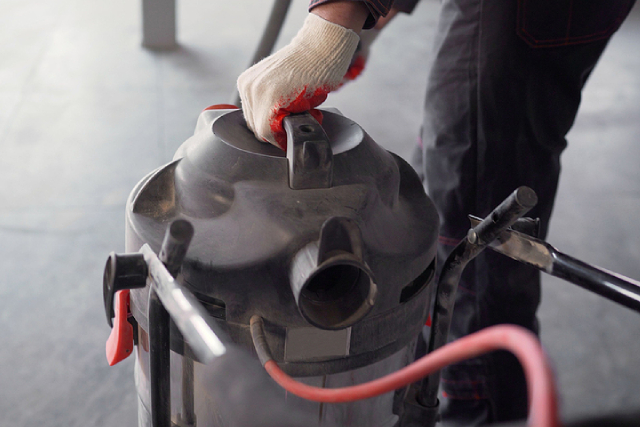A Quick Guide On The 3 Types Of Industrial Vacuum Cleaners

Various commercial or industrial vacuum cleaners are now available in the market. Still, most, if not all, of them belong to one of three main categories: wet, dry, and wet and dry vacuum cleaners in Singapore. Many think vacuum cleaners, like those found in the average household, are only good for removing dust and dirt on floors and carpets. But as we will discuss below, this is not the case, and the three categories each have several uses perfect for various situations.
Wet vacuum cleaners
Wet vacuum cleaners or wet-only vacuums are designed to draw liquids instead of dry materials. As such, they are the ideal tool for flooding, leaking pipes, and even simple accidents where water must be cleaned quickly. Hence, wet-only vacuums are the first step towards any cleanup or restoration task involving water damage. The water sucked in by the vacuum is then captured in its container or redirected out of the cleaning area if used with a discharge pump like a magnetic pump in Singapore.
Water damage can lead to accidents and potentially bigger problems for property owners. Therefore, it is vital to address the source of the flow and draw in the water as quickly as possible. The primary situations where a wet-only vacuum shines are:
- Water damage restoration
A wet vacuum cleaner is indispensable to a water remediation specialist’s toolkit as it enables quick and efficient work on the job site.
- Factory spills
For manufacturing facilities that deal with water and other liquids, spills are inevitable on the factory floor. Providing staff with a wet vacuum allows quick cleanups that reduce distractions and the risk of an accident.
- Fire services
Fire departments constantly deal with water. From working with fire hydrants and fire suppression systems to the cleanup after a fire, wet vacuums are an excellent tool for fire services.
- Home water cleanup
Be it man-made or otherwise, water-related accidents can happen in the home that can be easily resolved with a wet vacuum.
Dry vacuum cleaners
In contrast to wet vacuums, dry vacuum cleaners only clean the minor dry materials and particles like dust and dirt on surfaces such as hard flooring, carpeting, upholstery, furniture, and more. The vacuum works by sucking in the air, passing through a HEPA filter to remove microscopic impurities before it is released into space. The dry materials are then collected in a bag or container for quick disposal.
Dry vacuums are a must-have for many applications, namely:
- Cleanroom maintenance
Sensitive areas such as hospitals, pharmaceutical facilities, labs, and more have many cleanrooms that need a controlled environment free from even the finest contaminants. Powerful dry vacuums are among the tools that ensure total sanitation, especially those that can draw in even the finest particles.
- Construction site cleanup
A dry vacuum cleaner is essential to any construction site, whether to clean dust, dirt, and debris or remove potentially dangerous items like screws and nails from the ground.
- Office cleaning
A dry vacuum cleaner is a mainstay for office and retail cleaning as it can simplify the rigorous task of cleaning large areas every day.
- Abatement jobs
Abatement specialists often remove sensitive materials such as asbestos, mould, lead dust, and more. A professional-grade dry vacuum is perfect for handling such dry and hazardous materials.
Wet and dry vacuum cleaners
Wet and dry vacuum cleaners are designed for industrial-scale jobs like in construction sites where there is a vast array of waste to be cleaned up, necessitating the need for handling both liquid and dry materials at once. However, that is not to say they are only suited for such tasks as they also serve well for everyday applications like floor cleaning, carpet maintenance, buffing floorboards, unblocking sinks and baths, and more.
Its container is a two-bucket system that individually stores wet and dry waste instead of the regular vacuum bag of wet-only and dry-only vacuums. The vacuum sucks in solid and liquid waste through an intake port similar to other models. Inside, the airflow above the buckets drops, causing the air grip to loosen and allowing fluids and larger waste to bypass it and fall straight into the containers. Some models also feature a blower that can expel air at a quick rate, which makes them an ideal leaf blower alternative.
Conclusion
Vacuum cleaners are essential for household and industrial settings where quick cleanup is frequently needed. For those that deal with a mix of liquid and solid waste, a wet and dry vacuum cleaner is the best choice due to its high versatility compared to wet-only and dry-only vacuums.

